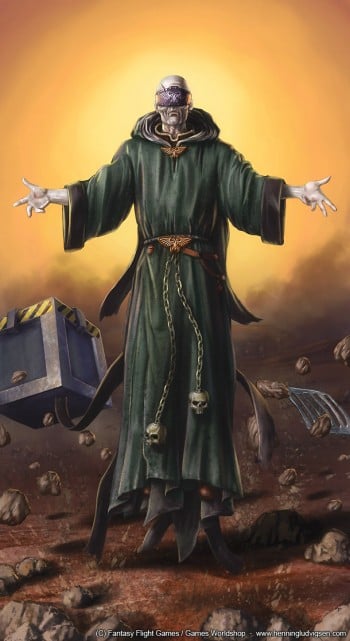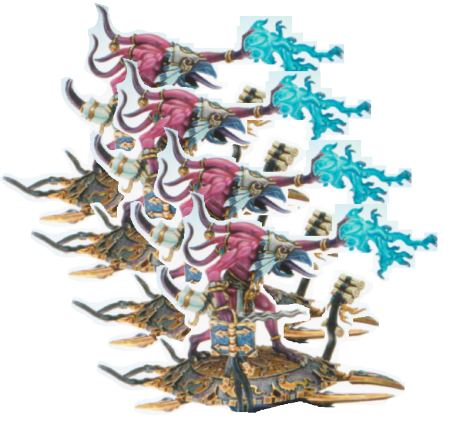40k Down Under, How Australia Tamed the Wilds of 7th Edition


Learn all about how the Australians have tamed 40K 7th Edition with a solid dose of Comp!
A guest column by Difsta
Australia is infamous for its dangerous animals. With sharks, poisonous spiders, crocodiles, more deadly snakes than any other country worldwide and even our plants can kill you. So we are used to the tough stuff, and when 7th Edition came along it was just another beast for us to deal with. Thus was born Community Comp
Traditionally in the East Coast of Australia we ran various forms of Comp systems. The most common were “Panel Comp” and “Peer Comp”. I won’t go into all the details of these 2 systems here, but I will discuss some of the issues that Players had with these systems. The biggest issue was panel or player bias. A small number of people were judging lists with potentially not enough experience to cover all the factions. These system started to die out at the end of 5th Edition. Not necessarily because players in Australia didn’t want comp scores, but players (and many TOs) were fed up with the inconsistencies in the comp scores being provided. In addition to the inherent flaws in the systems, a lot of players had no chance of justifying their list, or talking to someone “in power” about what score they got and why. So players were rocking up blind to tournaments.
It was 6th Edition that began the Arms Race in Australia. Lists were just getting stronger and stronger as each new codex was released. TO’s were banning formations or fortifications, the few tournaments that continued down the Panel Comp method were getting slammed for archaic thinking. It was during this time Community Comp was born.
It is hard to argue with the stats and player feedback we have been receiving. Let’s start by looking at Terracon, the Community Comp Golden Child. Terracon is one of the largest events in the state of South Australia. The interesting thing about this event is it’s in the middle of nowhere, 3.5hrs from the states capital Adelaide and 5hrs west from Melbourne, and has always had a composition focus. In 2011, the year of 5th Edition, the event had 74 players. 6th Edition dropped and the player numbers dropped down to the low 50’s. It stayed in the low 50’s for the next 3 years. Terracon was the first major event that ran Community Comp, and that was in 2014. We got great feedback, both positive and constructive. So much so that it helped springboard the system in to a number of other major events in Australia. In 2015, just the 2nd year for Terracon to be running Community Comp it has 100 players registered. It has doubled in size!
One of our members Matthew Cross best described the system by saying that it puts the score in the player’s control. They knows how strong their list is before the event, and if they disagrees with the score they have a “face” to discuss it with.
How Does Community Comp Work?
Community Comp overlays a secondary credit system which is used to restrict the power level and/or calculate a handicap score. Players spend some number of “Comp Credits” as they build their armies on various units or combinations. The more they spend the greater their handicap and armies generally average out between 8 and 12 credits. A team of experienced players engineer and tweak these credit costs to balance the meta game and make their decisions based on rigorous debate and as much community opinion and data as possible. Some of the units get stronger the more you have. This could be for a number of reasons, like you increase the chance of getting a power, an example of this is a Mastery Level 2 (or more) Daemon Herald. 1 isn’t all that, but as you get more you increase your chances of getting the required powers. This caused us to create a concept we call “Cumulative Scoring”. There is a full section in the document explaining how this will work.
Some rules (much like GW’s Rules) are simple, and some unfortunately by their nature are more complex. Drop Pods for example are one of these beasts. Some of them come down first turn, some come down later based on reserves. Where we believe the rule may be complex, we have done our best to show it in table form so you can simply look at a table and work out how many points something costs.
Wherever possible we make targeted solutions to specific “problems” rather than sweeping rules that hit units that we don’t intend to hit or miss other units that need to be hit harder. That could be about it, it lets you trim a lot of the fat of explaining the kinds of costs we make. The system is quite different to other systems in many ways, its depth and detail not least among them. It is very common for this to be a barrier for people who are newly introduced to it. People think it’s too complex, or think they can strait away see holes in the costings that allow for broken armies. These first impressions fade, and fade fast. When players start to actually build armies and play within the system they quickly realise just how solid the system is and how few holes there are. This is in large due to nearly 2 years of plugging any holes that have come up.
Why Ban Units?
Banning units is a contentious topic and it’s something we don’t take lightly. We have tried to make the smallest number of changes to the games fundamentals as we can, but some things are beyond a subtle solution. We have lowered the general power level of the format and so the average army is simply less capable of dealing with super monsters or units that differ wildly from the norm. Some things are simply unreasonable for an average and varied army to be expected to deal with at the same time as them fitting into the general meta game. For this reason we have decided that there is a ceiling on how powerful or tough a unit or combo can be before we ban it. That ceiling is high and we will bend over backwards not to do it but we have polled the community extensively and it seems to be globally accepted as a good idea.
Who is the Community Comp Team?
We started off with a group predominately out of Victoria Australia. We were mainly the players that people would commonly refer to as “Power Gamers”. We were players that mainly loved to play no comp style events, or worse yet, tried to “break” another events comp system. Since then the team has grown to what is over 20 members now. Some are “power gamers”, some are “fluff bunnies”, and we have some people who are there to help with our website or document formatting. We run as a tight-knit team. It requires all of us working together to make this system work, and you can find a list of the members involved here.
There are a couple of names that you will see more often than others. My name is Joshua Diffey (Difsta). I have been lucky enough to Captain the Australian ETC team in Poland (2012) and Serbia (2014). Matt Antonello (Paddlepop Lion), one of the founding members of the system. A lot of people would call this his brain child. So much so that a lot of people when referring to how many credits a list has spent they would say things like “I have spent 8 Paddle Pops” instead of credits. Matt and I have been playing 40k together for the last 6+ years. It was at an event where we were super frustrated with the comp scores allocated to not just our lists but a number of other lists that we started to format the concepts of Community Comp. I might add, we were drunk at the time, some would suggest that we still are. Eric Hitchenor, the TO of Terracon and what I would refer to as a Maths Wiz. Amongst many other things, without his belief in the system and taking the gamble and running it at his event back in mid-2014 I don’t think we would be where we are today with the System. Some of the members of the team are more vocal than others, but it takes everyone on the team, and more importantly Community Feedback to make this system work.
What is your take on Australia’s Community Comp?





